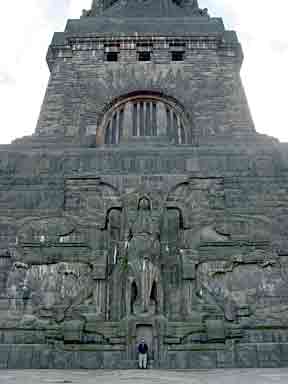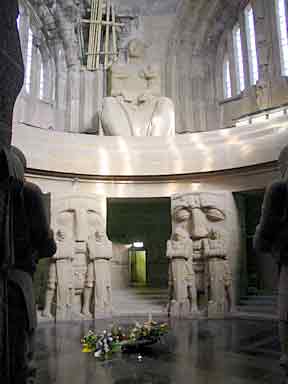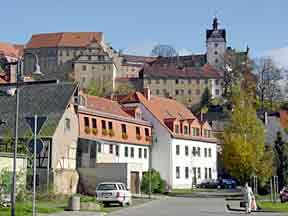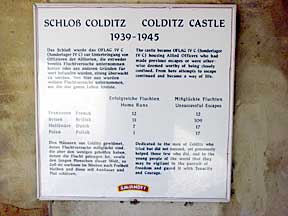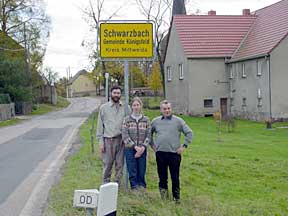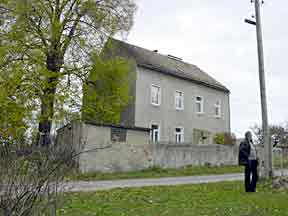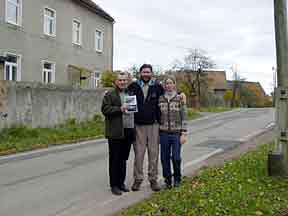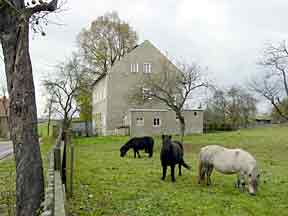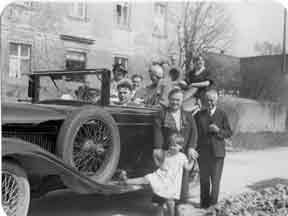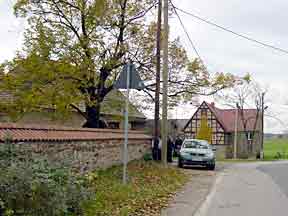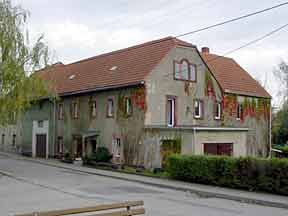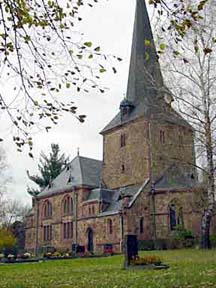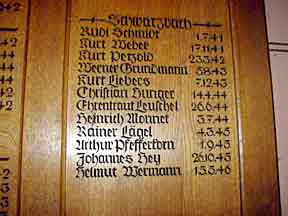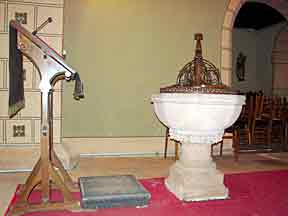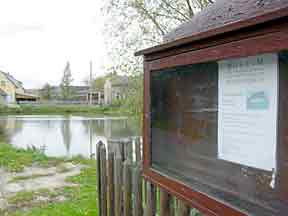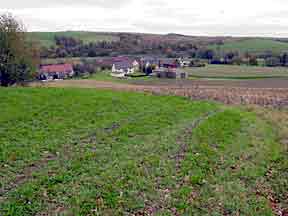| Germany in October 2002 | |||
Leipzig and Schwarzbach |
|||
|
Road trip by car to Annemarie and Jurgen's home towns of Leipzig and Schwarzbach. Jurgen, Sabine and us drove on the autobahn to Leipzig saw a Monument to the victory Germany and Prussia had over Napoleon. Colditz for lunch (rolled meat and potato dumplings) in a restaurant on the main square. Up to the Colditz Castle, where the WW2 Officers POWs tried many times to escape as a sport, without much punishment. After the war the castle was returned to be used as a hospital where Jurgen was there for 3 months. After he was released from the hospital, he had to walk 5 miles home with his mother. Home was in a small farming town called Schwarzbach. We stopped in front of the church and the home was across the street. Jurgen and Annemarie's father (Hans) was a teacher and the first floor of the home was the school for the children and the second floor was the residence. Inside the church we viewed a wooden plaque commemorating all the townspeople that died during WW2.. Jurgen and Annemarie's father was listed as passing away on Oct 26, 1945. Also visited the pond that they ice skated on in the winter which is next to a farming museum. After leaving Schwarzbach we stopped and looked down on a small village, they would sled down this hill in the winter. |
|||
|
Leipzig |
|||
|
|
|
||
|
Colditz |
|||
|
|
|
||
|
In November 1940 a handful of British RAF officers arrived, soon to be followed by 6 British Army officers, and later by some French. So, the castle became an international camp. More British, French, Belgians and Dutch soon added to the prisoner contingent which would reside in Colditz castle until its liberation on 16th April 1945. Early on it was decided that Colditz Castle should become a ‘Sonderlager’ (a maximum security prison), only accepting prisoners who had escaped at least once from other camps throughout the Reich, or who were pronounced ‘Deutschfeindlich’. Consequently, the German High Command had kindly assembled an international array of talent that boasted an expert in almost every field from mechanical engineering to lock-picking and the manufacture of home made explosives. The castle was visited by Reichsmarschall Hermann Goering early on in the war, and was declared to be "Escape Proof" - a prediction which, with hindsight, was rubbish. Throughout the five and a half years of war, over 300 escape attempts were made. This resulted in 120 ‘gone aways’ (escapers which got out of the castle but were later recaptured). At the fall of Colditz to the Americans in April 1945, 31 prisoners had successfully reached home - a figure unequaled by any prisoner of war camp during the Second World War. |
|||
|
Schwarzbach |
|||
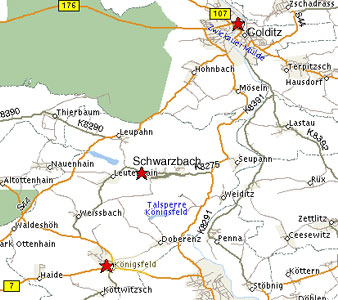 |
In 1935, Annemarie was born in Konigsfeld in the car on the way to the hospital. Jurgen spent 3 months in the hospital in Colditz (the same one listed above). He was originally admitted for a minor illness, but while in the hospital he caught a serious illness. Annemarie and the rest of the children would frequently walk the 5 miles from Schwarzbach to Colditz. |
||
|
|
|
||
|
|
|
||
|
|
|
||
|
|
|
||
|
|
This wooden plaque in the church honors those from this area of Schwarzbach that died in World War II |
||
|
|
|
||
|
|
|
||
|
Berlin - Potsdam | Leipzig - Schwarzbach | Salzburg - Hallstatt | Rothenburg - Koln | Bath - Stonehenge - Oxford |
|||
